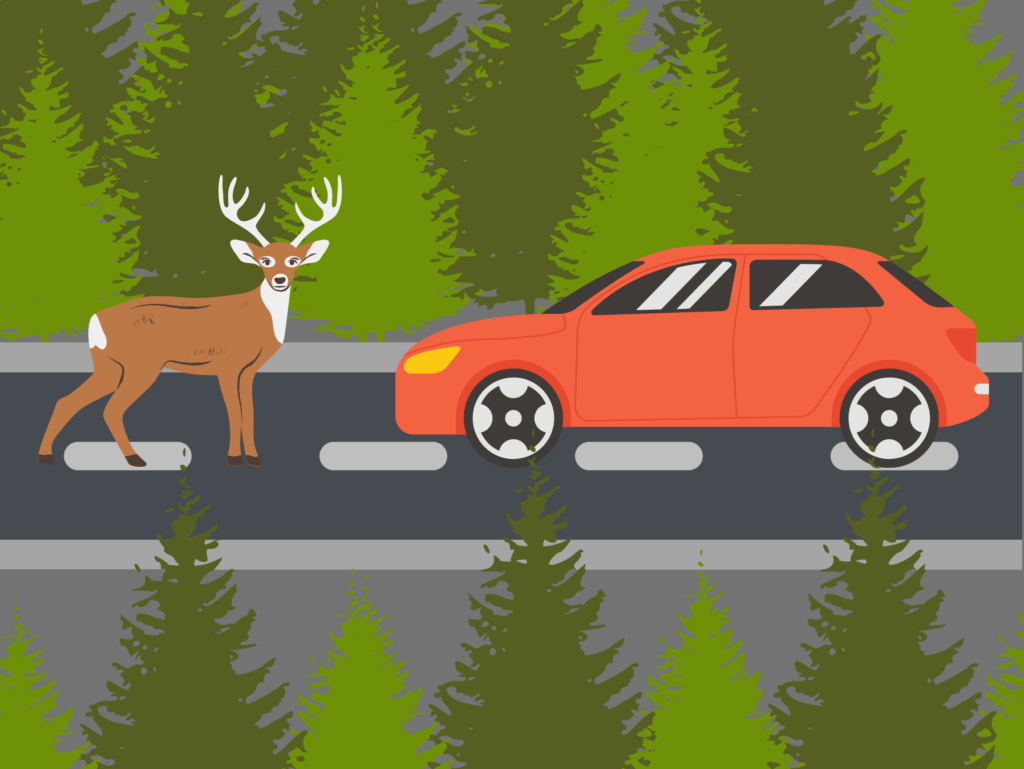
Deer mating season spans from late October through early January. In Connecticut, the peak of the season is the last two weeks of November, putting drivers at a higher risk of car accidents involving deer.
According to Andrew Labonte, a biologist at the Connecticut Department of Energy and Environmental Protection (DEEP), the deer population in Connecticut in 2021 was estimated at 115,000. Labonte spoke to HQNN about how drivers can stay safe during the deer frenzy.
“The best tips or advice I could give a motorist is to follow the standard laws and guidelines that are already in place,” Labonte said. “Following the posted speed limits, not using cell phones while driving, utilizing your high beams when at all possible during the low-light periods of the day during dusk and dawn when deer are typically most active during those hours.”
Labonte explained that there is an increased likelihood of deer accidents during mating season because “the males are chasing the females and they’re not really paying much attention to anything else.”
In case of a car accident involving a deer, Labonte explains that, firstly, if anyone is injured in the accident to call 911. From there, one can call a nearby police station to inform them of the situation and fill out an incident report that can assist a motorist with insurance claims and update agencies such as DEEP.
Lorenzo Bafumi, a Middletown, Connecticut native and Quinnipiac University student, was a passenger in a car accident involving a deer on Mount Carmel Avenue in the fall of 2020.
“I remember the car losing control, everyone got silent and there was a loud bang,” Bafumi said. “We actually didn’t know what it was at first and then we pulled off to the side of the road. The deer was screaming like 10 feet away. It was pure chaos.”
Bafumi and the other passengers in the car got out and watched as the deer writhed in pain, not knowing what to do.
“It was scary. We didn’t know if it was mobile or not. My roommate was going to approach it and mercy kill it but we told him no,” Bafumi said.
The group called Quinnipiac University’s public safety office to report the accident, who told them they would resolve the situation, and left. None of the passengers were injured in the accident.
Bafumi explained that since that night, he has been much more conscious as a driver.
“From that point on I definitely became more cautious driving with deer but I didn’t ever think about it before the accident,” Bafumi said. “I don’t speed at night, especially in the woods anymore. I wish I had known how common it is to hit deer. It’s the stuff you never think about until it happens to you.”
Labonte stressed that when a deer jumps into the road, the driver’s main priority is to protect the passengers in the car.
“There’s a variety of factors depending on the situation, but the one thing, you certainly don’t want to try to seriously swerve to avoid hitting a deer because sometimes that can lead to a more substantial accident than just hitting the deer itself,” Labonte said. “I know sometimes people think swerving to avoid the deer is going to save themselves from getting in an accident, but sometimes you can lose control of the vehicle and cause a worse accident than if you just ran into the deer.”
